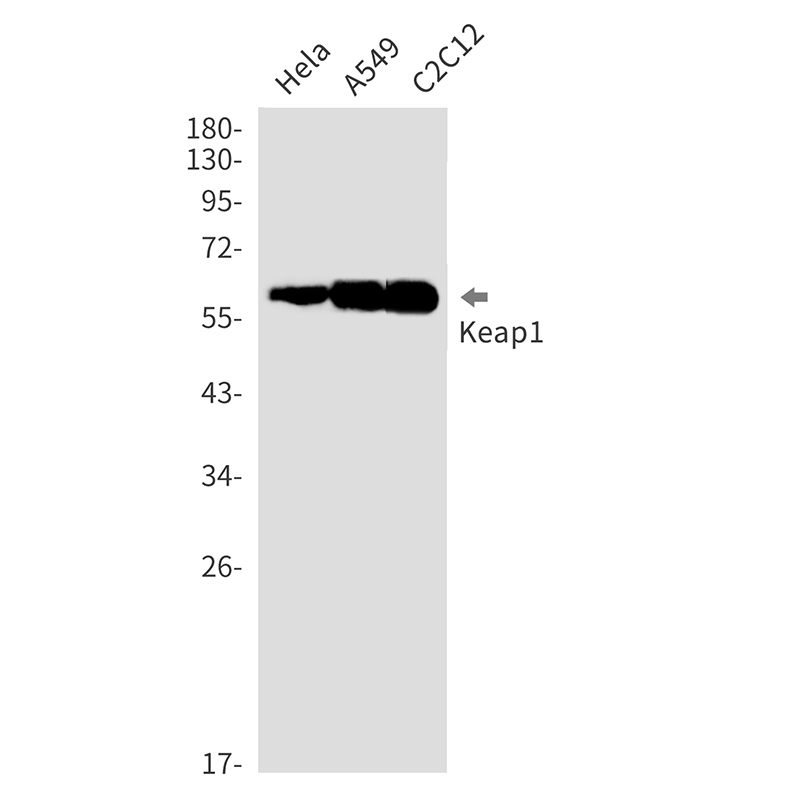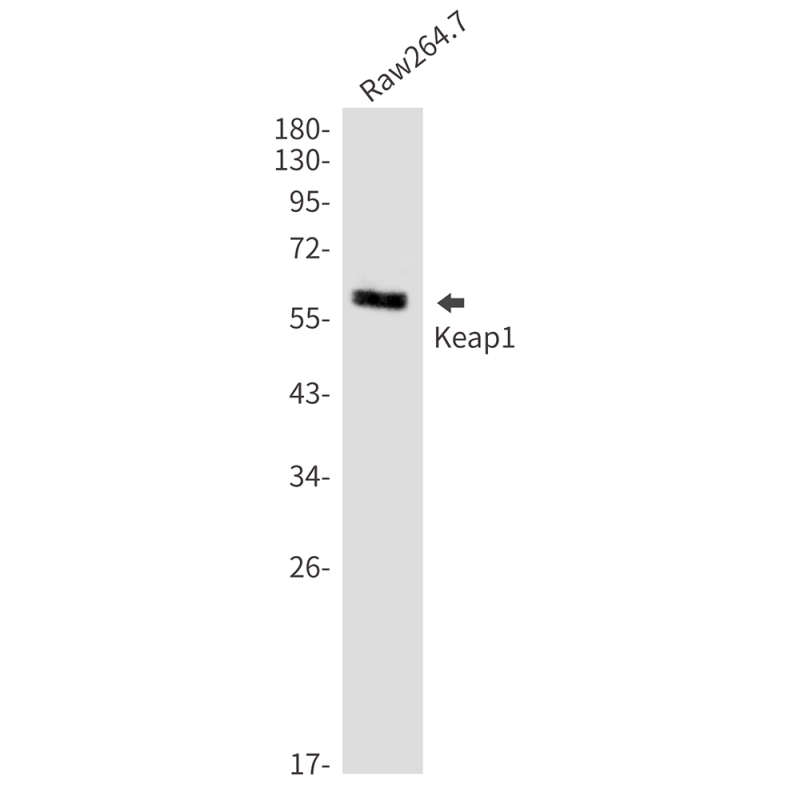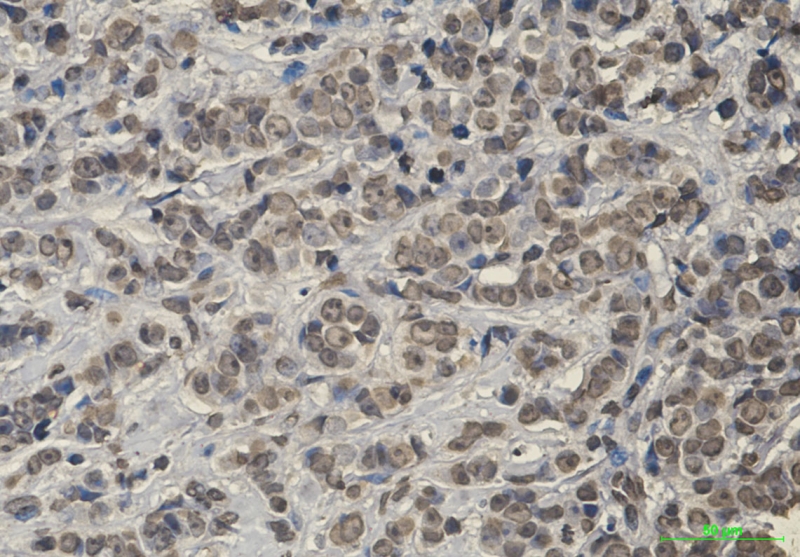


| WB | 1/500-1/1000 | Human,Mouse,Rat |
| IF | 咨询技术 | Human,Mouse,Rat |
| IHC | 1/50-1/100 | Human,Mouse,Rat |
| ICC | 技术咨询 | Human,Mouse,Rat |
| FCM | 咨询技术 | Human,Mouse,Rat |
| Elisa | 咨询技术 | Human,Mouse,Rat |
| Aliases | INrf2; KLHL19 |
| Entrez GeneID | 9817 |
| WB Predicted band size | Calculated MW: 70 kDa; Observed MW: 60-64 kDa |
| Host/Isotype | Rabbit IgG |
| Antibody Type | Primary antibody |
| Storage | Store at 4°C short term. Aliquot and store at -20°C long term. Avoid freeze/thaw cycles. |
| Species Reactivity | Human,Mouse |
| Immunogen | Recombinant protein of human Keap1 |
| Formulation | Purified antibody in TBS with 0.05% sodium azide,0.05%BSA and 50% glycerol. |
+ +
以下是关于Keap1抗体的3篇参考文献,涵盖结构、疾病关联及实验应用方向:
1. **文献名称**:*Structural basis for Keap1-Cullin3 interaction as a substrate adapter for ubiquitination*
**作者**:Tong, K.I., et al.
**摘要**:该研究解析了Keap1与Cullin3蛋白复合物的晶体结构,揭示了其介导Nrf2泛素化的分子机制。研究中使用特异性Keap1抗体验证了蛋白相互作用,为抗氧化通路调控提供了结构基础。
2. **文献名称**:*High frequency of Keap1 mutations in lung adenocarcinomas drives Nrf2-dependent tumor growth*
**作者**:Singh, A., et al.
**摘要**:通过免疫组化(Keap1抗体)和测序分析,发现肺癌中Keap1高频突变导致Nrf2通路持续激活,促进肿瘤生长,提示Keap1作为潜在治疗靶点。
3. **文献名称**:*Antibody-based profiling of Keap1 in neurodegenerative diseases reveals cytoplasmic aggregation*
**作者**:Taguchi, K., et al.
**摘要**:利用Keap1特异性抗体检测阿尔茨海默病等神经退行性疾病模型,发现Keap1在神经元胞质异常聚集,可能影响氧化应激反应及病理进程。
4. **文献名称**:*Validation of a novel monoclonal antibody for Keap1 detection in Western blot and immunohistochemistry*
**作者**:Hirotsu, Y., et al.
**摘要**:报道了一种高特异性Keap1单克隆抗体的开发与验证,证实其在Western blot和石蜡切片中的可靠性,为Keap1表达定量提供实验工具。
以上文献涵盖Keap1的结构功能、疾病机制及抗体应用,可为相关研究提供参考。
Keap1 (Kelch-like ECH-associated protein 1) is a critical regulatory protein involved in cellular defense mechanisms against oxidative and electrophilic stress. It functions as a substrate adaptor for a Cullin3 (Cul3)-based E3 ubiquitin ligase complex, primarily targeting the transcription factor Nrf2 (nuclear factor erythroid 2-related factor 2) for ubiquitination and proteasomal degradation under basal conditions. Under stress, reactive oxygen species (ROS) or electrophilic agents modify specific cysteine residues in Keap1. disrupting its interaction with Nrf2. This stabilizes Nrf2. allowing it to translocate to the nucleus, bind antioxidant response elements (AREs), and activate cytoprotective gene expression.
Keap1 antibodies are essential tools for studying this pathway, enabling detection of Keap1 expression, localization, and interaction partners in techniques like Western blotting, immunohistochemistry, and immunoprecipitation. Dysregulation of the Keap1-Nrf2 axis is implicated in diseases such as cancer (where mutations may confer drug resistance), neurodegenerative disorders, and chronic inflammatory conditions. Researchers also use Keap1 antibodies to explore therapeutic strategies targeting this pathway, including Nrf2 activators or Keap1 inhibitors. Specificity and validation of these antibodies are crucial, as cross-reactivity with homologous proteins or splice variants can affect data interpretation. Commercial Keap1 antibodies are typically raised against epitopes in its N-terminal BTB domain or C-terminal Kelch repeat region, with applications spanning basic research and drug development.
×